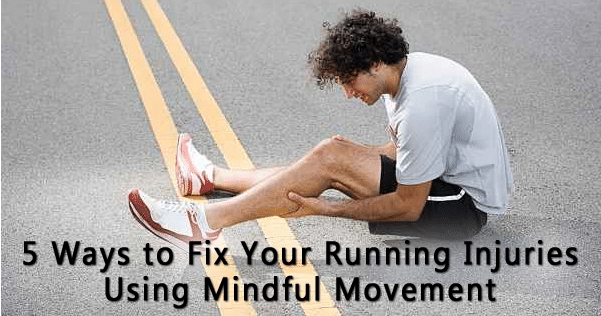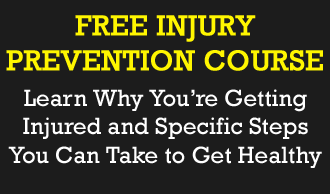As runners we pride ourselves on being fairly resilient creatures, which makes it all the more difficult when we find ourselves having to accept the fact that a niggle we’ve been trying to ignore has reached such intensity or duration that we have no choice but to seek help from a health professional.
What type of health professional we choose to see, be it a sports therapist, physiotherapist, osteopath, chiropractor, etc., often depends on either a recommendation from a fellow runner or maybe a little home spun self diagnosis via Google, but ultimately we are looking for someone to fix us.
In anticipation of the appointment, we hope the issue is at worst a muscle strain because we know a bit of massage and ultrasound can fix that.
We hope it is not a tendon or a ligament because they take longer to fix.
We pray to the running gods it is nothing skeletal as that conjures up images of slipped discs and everlasting pain because we know there is not a lot anyone can do to fix bones, apart from surgery, and that’s really not a road we want to go down.
Despite the conditioned belief that in times of pain we need a pill or a professional to ‘fix us’, modern pain science suggests that this tendency to disconnect ourselves from responsibility and place ourselves in the hands of a third party can actually slow down our recovery.
Lying on a treatment couch whilst a therapist rubs, twists, pulls and pokes us may result in us leaving the clinic pain free, limping less, able to lift our shoulder, turn our head, etc. but as many of us are probably all too aware this ‘fix’ can often be temporary.
So we go for another session of treatment, and another.
Research actually suggests that stronger our belief that the actions of the therapist are ‘fixing’us, e.g. having our spines ‘clicked back into position’, the higher the danger of us becoming dependent on their help, until months or even years have passed of us getting ‘fixed’ without actually getting fixed!
So, what does this mean for you? Should you stop seeing a therapist? How do you get “fixed” without becoming dependent?

The Therapist’s Role
Before we continue, please note that I am not saying do not go seek help from a professional.
Apart from that being professional suicide on my behalf, this article is not about you putting up with ongoing pain or trying to deal with it all yourself.
As a runner there is a lot you can do to manage pain in the initial onset but as a general rule if the pain has lasted over four days or is forcing a change to the way you move, you should definitely go seek advice from a health professional.
However, the key word is advice.
Yes, therapists have many ways of helping reduce pain and increase movement but the most important role of a therapist is to help you manage yourself. This should include explanation and education as to what is going on, and most importantly provision of a clear, structured plan detailing what you need to be doing/not doing over a specified time period to start fixing yourself.
The Brain’s Role
In order to help you understand why you taking control is so important when it comes to dealing with pain and injury, we need to take a closer look at how neuroscience is changing our understanding of manual therapy.
Deep tissue massage, myofascial work, mobilisations, stretching, acupuncture – all of these can serve to help decrease pain and increase mobility in the short term.
However, despite the traditional belief that these techniques directly affect our muscles, tendons, ligaments and fascia, modern research suggests that the changes in tension, mobility and pain we experience after these manual treatments are more likely to be the product of temporary changes to the nervous system.
In other words, although having a therapist rub, twist, pull and poke us may make us feel better and closer to being ‘fixed’, it is unlikely the treatment alone will provide a long term solution.
To promote long term changes, you need to be in control, you need to be the one doing the moving. Only you can fix the more important of your two bodies.
Body Maps
Yes, you read it right – I just said two bodies.
I am referring to what could be regarded as far as pain goes as the more important and significant ‘virtual body’ that each of us carries in our brains, referred to as Body Maps.
A basic understanding of the relevance of Body Maps when it comes to dealing with injury and pain can help runners appreciate the importance of performing rehabilitation correctly and in doing so potentially help us to not only speed up recovery but also avoid the frustration of chronic reoccurrences.
Body maps are probably one of the most exciting discoveries of modern day neuroscience.
All of our physical body parts are represented by neuronal networks in the brain, referred to as body maps.
As far as pain goes, the body map is reality.
If your body map says your foot is on fire, you will feel like your foot is on fire, even if you don’t even have a foot! (Read more about phantom pain in ‘An Introduction to Understanding Pain’.
The exciting thing about body maps is that they are always changing size, shape and organization, a process called neuroplasticity.
The better the size and quality of a body map, the better the perception and movement of the physical body part it represents.
When you practice a movement, the body map representing the physical body part involved grows in size. However, if you stop using a particular body part, e.g. when you are injured and/or in pain, the body map for that particular body part becomes ‘blurred’ (also referred to as ‘smudged’).
In other words, if you don’t use it you lose it.
Mindful Movement
When a body map becomes blurred, the brain’s perception of the body’s movement becomes distorted.
Its powers of assessing a particular situation become hindered and it becomes threatened unnecessarily.
As we saw in ‘An Introduction to Understanding Pain’, if the brain feels threatened it outputs pain. We are not saying that pain is all in your head, we are saying that in order to restore the brain to a less threatened state we need to restore the integrity of the blurred body maps.
And that will not happen by having someone else rub, twist, pull or poke our physical body.
Blurred body maps are cleaned up by us performing goal orientated, concentrated movements, in other words mindful movement. The simple act of slowly and carefully drawing the alphabet with your toes can often result in a sprained ankle hurting less when you try and walk on it again.
You have not affected the physical structures of the foot; you have filled in some of the gaps on the body map in your brain. If moving in a certain way is regarded as threatening by the brain, changing the movement slightly so that you can perform it in less pain and with more coordination will encourage reintegration of body maps, a less threatened brain and nervous system, and therefore less pain.
RunnersConnect Bonus
Download your FREE breathing guide for Runners.
It’s a PDF with images and descriptions of the most effective pilates exercises to strengthen your body while relaxing your mind. The perfect time to visualize and go through those barriers.
Mindful Movement in Rehab
The existence of body maps and neuroplasticity has huge implications when it comes to performing rehab.
First of all, it reinforces the fact that if you want to move better and be in less pain, you have to do your exercises!
The second is how you perform the exercises. Too many clients I see rush through rehab, in other words they just go through the motions.’
Research shows that restoring size, shape and organisation to our body maps is best achieved by:
- Active Movement– i.e. you performing the movement, not a third party.
- Concentration – be mindful of what you are doing and how your body feels.
- Breathing – focussing on breathing whilst moving is a great way to enhance concentration.
- Goal Orientated – e.g. rather than just twisting your ankle round, try drawing the alphabet.
- Novel – new movements will stimulate the brain; experiment, explore.
To incorporate the above factors, you may only need to tweak you rehab slightly.
Set yourself goals, stay attentive of what you are doing, practice different tempo’s, explore different ways of breathing, discover new ways of performing the same exercise but with body parts in slightly different positions.
Imagination is the only thing that can hold you back. Make it mentally challenging, make it fun!
Conclusion
Many of the above elements of mindful movement are already waiting for you in a multitude of group classes: Yoga, Pilates, Tai Chi – any class that involves slow, controlled, purposeful movement will potentially help restore and improve body maps.
I do not recommend classes performed in time to music for mindful movement as this defeats the whole purpose of individual exploration.
Calm, soothing music in the background may well help you achieve the desired state of relaxation and concentration, as will suitable lighting and temperature.
You may need to have a look around for an instructor you feel comfortable with as a positive connection with him or her is vital for you to be able to remain focused and enjoy the experience. The advantage of an instructor is they can provide you with feedback, something that has also been shown to help improve the revitalizing of body maps.
If you are performing rehab with your therapist, they too should be providing you with feedback and suggesting novel ways of moving in order to stimulate the nervous system.
A rub, twist, pull or poke before the rehab can often help to reduce pain and free up some movement, but as a rule always follow it up with some active movement.
Your body, your brain, your movement… you fix it!
Happy Rehab!
Matt Phillips is a Running Injury Specialist & Video Gait Analyst at StrideUK & Studio57clinic. Follow Matt on Twitter: @sportinjurymatt





One Response
This is one of the best articles on injury I’ve ever read. The body map idea makes real sense as does performing mindful drills in order to fill out and reinforce the map, therefore allowing the mind to understand running movements as safe and non threatening.
Thanks very much.